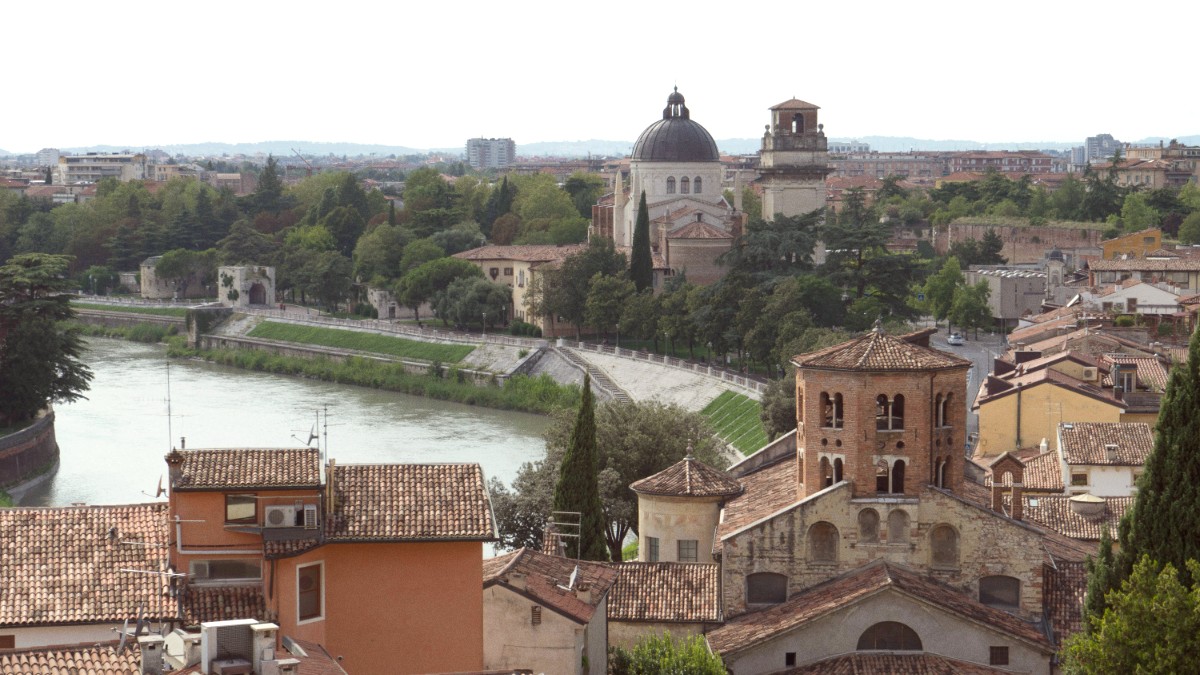
The Veneto, Italy
Verona's allure extends beyond its famous Roman landmark. Picture yourself crossing the Ponte Pietra, an ancient Roman bridge, with views of the Adige River winding through the city and the hills rising above. Consider visiting Juliet's House, where a balcony invites romantic contemplation, drawing countless visitors to leave messages of love. These iconic spots are only the beginning. Verona has a less hurried pace than some of Italy's larger tourist hubs, letting you immerse yourself in its rhythm. You can linger in a local osteria, enjoying traditional Veronese cuisine, or simply sit in a piazza, observing daily life unfold.
The city's elegance comes through in its architecture, from frescoed palaces to well-preserved defensive walls. Its streets invite exploration, leading you from bustling market squares to quiet courtyards. Every alleyway displays another piece of history, another beautiful façade.
Verona presents an experience that combines history, art, and the simple pleasures of Italian life. It is a city that invites you to slow down, to savor each moment, and to leave with lasting memories. Plan your visit carefully to make the most of Verona's unique offerings, from its historical grandeur to its warm, welcoming spirit.
Verona sits in a strategic location within Italy's Veneto region, positioned in the country's northeast. The city spans the Adige River, which curves through its historic center.
To the north of Verona, the Lessinian Prealps rise, forming a natural boundary and creating a cooler climate for outdoor activities. These hills transition into the broader Po Valley to the south, one of Italy's most fertile agricultural areas. This geographical diversity guides Verona's local produce and culinary traditions. To the west, Verona lies close to Lake Garda, Italy's largest lake. The lake's presence creates a completely different landscape and recreational opportunities, from water sports to charming lakeside towns. The proximity to Lake Garda means travelers can combine a city break with a relaxing escape by the water.
Ancient Roman roads converged here, linking it to Milan, Venice, and Rome. Later, it became a trade and military center.
Major railway lines and highways connect Verona to other prominent Italian cities and European destinations.
Verona positions as an excellent base for exploring Veneto's art cities and the stunning Dolomites.
The interplay of river, plains, hills, and nearby lake presents Verona with a varied natural setting.
This geographical positioning shaped its past and continues to guide its present character.
Verona's location has always made it a crossroads. Ancient Roman roads converged here, connecting it to Milan, Venice, and Rome. In later centuries, it became an important center for trade and military operations. Today, this historical advantage translates into modern accessibility.
Major railway lines and highways link Verona to other prominent Italian cities and European destinations. This positions Verona as an excellent base for exploring a wider region, including other art cities of the Veneto and the stunning Dolomites.
The interplay of river, plains, hills, and nearby lake presents Verona with a varied natural setting that complements its urban appeal. This geographical positioning shaped its past and continues to guide its present character, creating a rich environment for visitors to explore.
Verona has a welcoming, approachable size. You can walk to most attractions within its historic center, making it easy to experience without constant reliance on transport.
Its story begins with the Romans, who established a thriving settlement here around the 1st century BC. Evidence of this powerful past remains striking today, most notably in the Arena di Verona. This incredibly preserved amphitheater, along with the Roman Theatre and ancient city gates like Porta Borsari, displays the engineering prowess and cultural life of the Roman Empire. Verona served as an useful Roman outpost due to its strategic position, cementing its early importance.
Following the fall of the Roman Empire, Verona experienced periods of Gothic and Lombard rule before entering its medieval phase. The Scaliger family dominated Verona from the 13th to the late 14th centuries. Under their patronage, the city flourished as an artistic and political center. The formidable Castelvecchio fortress and its impressive Ponte Scaligero bridge remind visitors of their reign. These structures illustrate the Scaligers' military might and their commitment to public works. The elaborate Arche Scaligere, funerary monuments of the family, also point to the era's architectural and sculptural achievements.
The Arena di Verona, Roman Theatre, and Porta Borsari display Roman engineering and culture.
Under the Scaliger family, the city flourished as an artistic and political hub.
Under Venetian rule, Verona's artistic and architectural landscape saw further enrichment.
Verona then came under the dominion of the Venetian Republic in the early 15th century, a period that lasted for nearly 400 years. This era brought relative peace and prosperity, further enriching Verona's artistic and architectural landscape. After the fall of Venice to Napoleon, Verona briefly fell under French rule before becoming part of the Austrian Empire in the 19th century. The Austrian presence left its own architectural legacy, especially in military structures.
Each building, each square, tells a part of Verona's long and varied story, presenting a deep sense of connection to its past.
Verona has a compact yet comprehensive Italian experience, blending ancient Rome, medieval charm, and Renaissance elegance.
Recognized as an UNESCO World Heritage site for its well-preserved urban fabric, permitting visitors to step directly into history.
Visit the Arena, Juliet's House, Torre dei Lamberti for panoramic views, and the Castelvecchio Museum.
A blend of historical depth and romantic ambiance.
Delicious traditional cuisine and world-class wines.
Rich cultural experiences within a welcoming and easily walkable city.